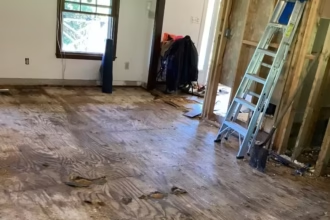From advanced treatments to skincare, the field of beauty therapy is still growing and offers a variety of services. However, growing popularity also increases the likelihood of accidents that could lead to insurance claims. By knowing the most common claims, beauticians may better manage risks and protect their companies. Five of the most frequent claims involving beauty salon insurance are listed below:
Allergic Responses:
One of the most common claims in beauty therapy is product allergy. Even after having thorough consultations and patch tests, clients may still have adverse responses to particular ingredients in cosmetic goods. From small skin rashes to potentially fatal allergic reactions like anaphylaxis, these reactions could be anything. When a client decides to take legal action, claims related to allergic reactions typically cover both potential legal fees and medical expenses. Visit Quoteradar.co.uk for the best beauty salon insurance.
Infections Following Operations:
People who have skin-damaging procedures such as microblading, dermal fillers, or microneedling may develop infections. These claims typically arise when clients acquire illnesses as a result of improper tool sterilization or insufficient aftercare recommendations. Sometimes infections cause more severe side effects that require intensive medical attention.
Misguided Advice:
Despite the fact that you and your employees are seasoned professionals, the advise you offer is general. Something that works for a lot of your clients can unexpectedly backfire on another. In the beauty industry, claims resulting from expert advise that clients felt was improper or unsatisfactory are rather frequent. For this reason, the majority of beauty businesses obtain professional indemnity insurance in case something happens.
Burns from Treatments:
Burns, particularly after heat- or chemical-based procedures like chemical peels, laser hair removal, and waxing, are another frequent claim. Even with the proper training and safety precautions, burns can still happen, especially if the client has sensitive skin or the equipment isn’t operating correctly. Medical costs, scars, and psychological distress are often covered by burn claims.
Damage from Fire and Storms:
There is no human control over natural or unintentional calamities. In the event of a disaster, you never know what might happen to your company. Storms, fires, and floods can cause disastrous property damage that can seriously affect how your business is operated.
One of the most frequent claims filed by beauty firms is for storm and fire damage. Insurance coverage can change based on a number of business-related issues, so be sure to go over the specifics with your insurance broker.
What Are Some Ways To Lower Your Risk?
To put it simply, you may make sure you have rules and processes in place to help such calamities from occurring. Environmental disasters and the behavior of others are beyond your control. That is to say, mishaps do occur! The following straightforward advice will help you reduce your risk:
- To get ready for a potential natural disaster, create a risk management strategy. This can involve keeping trees around your property, testing fire safety detectors, updating emergency escape routes, and shielding windows from flying debris.
- Make sure you have enough illumination both inside and outside your salon, install enough security equipment to prevent unauthorized entry, and run background checks on your staff.
- Use non-slip mats when needed, follow Occupational Health and Safety protocols, and keep floors and walkways dry and free of potential trips.
- Make certain that every employee is qualified and trained for the duties they are carrying out, that they only use your products and equipment as intended and that they always adhere to the manufacturer’s instructions, and that you promptly and appropriately address any customer complaints about your services.
- Make sure you have easy access to the contact information of local professionals, such as electricians and plumbers, and have a backup strategy in place for your company’s operations in case of an emergency, such as a second site from which you may work.
- Last but not least, determine the particular dangers that your company faces and take precautions against them by ensuring that you have the appropriate insurance coverage in place. As your company develops and changes, it’s also a good idea to examine your policies once a year.

















